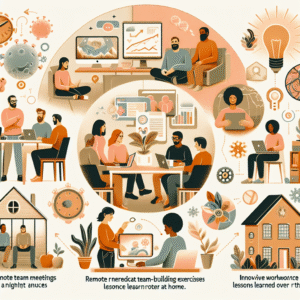Understanding the Role of Interest Rates in the Economy

Understanding the Role of Interest Rates in the Economy
In the economic world, the play of numbers is not only critical but also complex. Out of all economic statistics, perhaps the one with the highest repercussions for every household is the interest rate. Interest rates have a significant influence over all aspects of a nation’s economy, including inflation, employment, and growth. Just how do interest rates shape our economic reality? Let’s delve into the complex interrelationships to find out.
The Pull of Interest Rates
Interest rates essentially are the cost of borrowing and the reward of saving. When the rates are high, you pay more for your credit card debt or mortgage but earn more from your savings account or investment instruments. Contrarily, lower rates signify cheaper loans but lower returns on savings and investments. Therefore, the condensing and relaxing of these rates by central banks stimulate or cool down economic activities.
Interest Rates and Inflation
One of the main objectives of any central bank is controlling inflation. Inflation occurs as the increase in prices causes the cost of goods and services to rise, thereby diminishing purchasing power. By adjusting interest rates, central banks can regulate the amount of money circulating in the economy.
When inflation is high, increasing the interest rates can help cool the economy. High interest rates encourage individuals to save more and borrow less due to the higher cost of borrowing. This leads to a decrease in spending, thereby slowing down the economy and reducing inflation.
Interest Rates and Businesses
Interest rates directly affect business borrowing costs. Higher interest rates mean businesses must pay more to service their debts. This scenario leads to lower profits, less hiring, and stunted growth, translating to an economic slowdown. Conversely, lower interest rates allow businesses to borrow more cheaply, leading to increased investment in manpower and infrastructure, and ultimately, economic growth.
The sentiment in the business world is also swayed by interest rates. The anticipation of future interest rate hikes or reductions can either discourage or encourage business investments. After all, why invest now when you can borrow more cheaply in the future?
Interest Rates and Interdependent Global Economies
Interest rates do not only influence domestic economies but also wield power in the global financial sphere. For countries with higher interest rates, they tend to attract foreign investors seeking higher returns, leading to an increase in the demand for the nation’s currency. This can result in the currency’s appreciation, making exports more expensive and imports cheaper.
Likewise, lower interest rates can lead to capital outflow causing the country’s currency to depreciate, making exports cheaper and imports expensive. It underlines why central banks often closely monitor interest rates overseas and adjust their rates accordingly, thus maintaining competitive balance.
Conclusion
Thus, understanding the role of interest rates in the economy is pivotal for understanding the broader economic trends and policies. It helps individuals make informed financial decisions and businesses strategize their growth plans. While interest rates may seem like a minuscule number, they hold a significant place in shaping the economic narratives of nations and the world.
* The post is written by AI and may contain inaccuracies.


